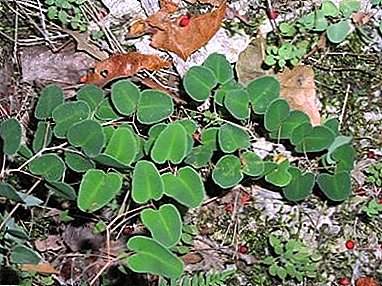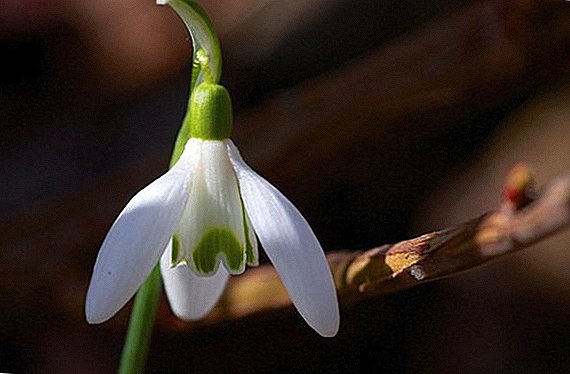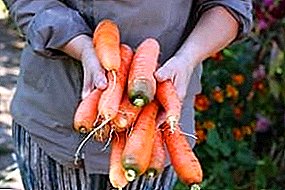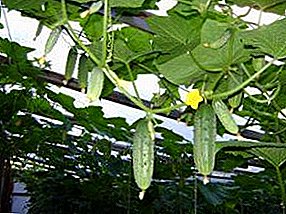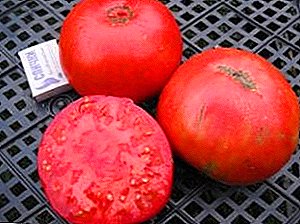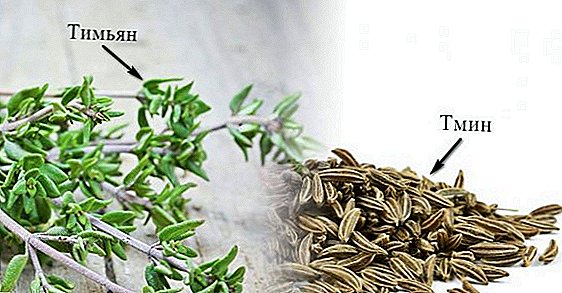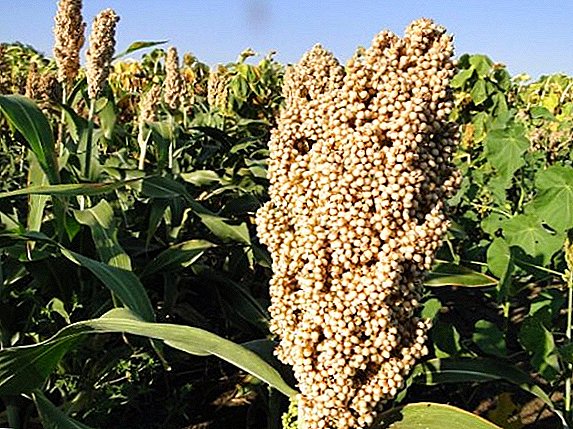 Sorghum is a not very well-known cereal plant in our latitudes, which grows in Africa, Asia, both parts of the Americas, Australia and Europe.
Sorghum is a not very well-known cereal plant in our latitudes, which grows in Africa, Asia, both parts of the Americas, Australia and Europe.
Culture has food value and is also widely used as pet food. The plant is a raw material for the production of flour, starch, alcohol (bioethanol) and cereals, as well as sorghum honey. In light industry, sorghum is used for making paper, various types of weaving, as well as brooms.
All numerous varieties of sorghum are conventionally divided into four main groups: sugar, grain, pasture and venice sorghum. The first three plant species are used as fodder, however:
- sugar sorghum, very juicy and tender, is also used as raw material for molasses;
- starch is made from grain and used in food;
- Grassy (grazing) sorghum, including Sudanese grass, is used exclusively as feed in livestock as part of other grain crops.

Did you know? In the Soviet Union, all types of sorghum, including the broom sorgo, were used to feed animals and fish. But after the collapse of the USSR, the total number of farm animals in the former republics sharply decreased, and therefore the demand for this type of feed fell. With the gradual restoration of animal husbandry as the sorghum industry, nevertheless, it was not able to restore its previous positions, since preference was given to new breeds of farm animals imported from abroad, which, in turn, were already accustomed to other feed.
Among the countries that produce sorghum, the United States currently occupies a leading position, followed by Mexico, India, Argentina, Australia, Nigeria, Sudan and Ethiopia. The main importer of sorghum in the world is China: this state grows sorghum on its own, but to meet its own product needs, it purchases it abroad.
The best predecessors for sorghum
 Sorghum is permissible to grow on soils previously occupied by any crops, but only after the complete destruction of weeds in the fields. The best precursors of sorghum are those plants that do not leave behind a strong soil contamination and do not dehydrate it. These qualities are primarily possessed by crops that give an early harvest, because in this case the farmers have enough time to prepare the ground for the sowing of sorghum: to moisten and remove the weeds.
Sorghum is permissible to grow on soils previously occupied by any crops, but only after the complete destruction of weeds in the fields. The best precursors of sorghum are those plants that do not leave behind a strong soil contamination and do not dehydrate it. These qualities are primarily possessed by crops that give an early harvest, because in this case the farmers have enough time to prepare the ground for the sowing of sorghum: to moisten and remove the weeds.
The cultivation of sorghum after peas, corn and winter wheat gives good results.
Did you know? Sorghum has a very important feature for farmers: it can be sown at the same place many times in a row without worrying about the crop rotation. The crop of culture at the same time from year to year does not decrease. This advantage of the plant allows it to be planted on areas unsuitable for other crops, as well as on soils depleted after previous use.
Soil preparation and fertilization
The rules for cultivating soil for sorghum do not depend on the purpose for which the crop is grown. Since poorly irrigated lands are usually used for this plant, it is important that the soil accumulates and retains as much moisture as possible in the period before sowing.
If sorghum is planted on the place of spike plants, before sowing it is necessary to carry out a deep peeling of stubble using special equipment. If necessary, the procedure should even be repeated or additionally treat the soil with a roundup herbicide.
Important! If the stubble peeling procedure is not carried out in time (not immediately after harvesting the predecessor), the soil will have time to dry and petrify, as a result, the task will be much more difficult.
 The second stage - loosening of not less than 25 cm in order to get rid of perennial weeds. After that, the soil should be leveled, without leaving this procedure until spring, otherwise the earth will not be able to retain moisture and accumulate it in sufficient quantity.
The second stage - loosening of not less than 25 cm in order to get rid of perennial weeds. After that, the soil should be leveled, without leaving this procedure until spring, otherwise the earth will not be able to retain moisture and accumulate it in sufficient quantity.
A good harvest of sorghum is impossible without adding to the soil the necessary, taking into account the analysis of the specific composition of the soil, the amount of mineral fertilizers - primarily nitrogen, phosphate and potassium. It is better to fertilize the soil in autumn, because in the spring, due to the dryness of the soil, sorghum roots will not be able to fully use the added additives.
In the spring, before sowing, the land is harrowed: sandy soils in one track, loam in two. Cultivation before sowing must be carried out necessarily, if the field has managed to overgrow with a weed, the procedure is repeated twice.
If the moisture in the ground is not enough, it is also useful to make a cottage: it will warm and moisten the soil, will accelerate the growth of weeds, which will immediately be destroyed by cultivation.
In general, the procedure for preparing the soil for sorghum is similar to that which is carried out before planting vegetables.. The main thing that needs to be achieved is to moisten the ground as best as possible in the layer in which the seeds will germinate.
Seed preparation for sowing
 Sowing sorghum should be carried out after the preparatory work with the seeds, this is the key to good germination. First of all, the testes of the plant must be properly harvested: if the grain is wet at the time of harvesting, it should be removed separately, ensuring thorough drying of the panicles and grains. Dried seeds are cleaned, sorted, brought to sowing condition and stored in dry places with good ventilation.
Sowing sorghum should be carried out after the preparatory work with the seeds, this is the key to good germination. First of all, the testes of the plant must be properly harvested: if the grain is wet at the time of harvesting, it should be removed separately, ensuring thorough drying of the panicles and grains. Dried seeds are cleaned, sorted, brought to sowing condition and stored in dry places with good ventilation.
About a month before sowing, sorghum seeds are pickled to protect against fungi, bacteria and pests, as well as to destroy their own microflora that enter the seeds during winter storage.
On the eve of seed sowing, the seeds must be heated to wake them up for better germination. To do this, the seeds are scattered in a thin layer on a tarpaulin and left for a week in the sun, stirring occasionally. If the weather is cloudy at the right time, you can simply dry the seeds in a regular drying.
Optimum dates for sorghum sowing
It is better to sow sorghum after the soil temperature warms up sufficiently after winter. For grain varieties, the average daily temperature at the depth of sowing should be at least 14-16 ° C, for sugar and pasture, it is permissible a degree lower. At higher temperatures, sorghum rises twice as fast.
Important! Early sowing leads to poor germination, in addition, the culture grows weak and quickly overgrown with weeds.
Soil moisture at the time of planting should ideally be 65-75%.
Methods of sowing sorghum for animal feed
 Since sorghum belongs to small-seeded plants, it cannot be planted too deeply: shoots with such planting appear later and grow worse. On the other hand, if the sorghum is planted too small, it may not climb at all due to the fact that the ground is drier on the surface. Based on this, it is important to observe the optimum depth for planting - about 5 cm in wet spring and a few centimeters deeper in dry weather (the seeding rate in the latter case should be increased by at least a quarter).
Since sorghum belongs to small-seeded plants, it cannot be planted too deeply: shoots with such planting appear later and grow worse. On the other hand, if the sorghum is planted too small, it may not climb at all due to the fact that the ground is drier on the surface. Based on this, it is important to observe the optimum depth for planting - about 5 cm in wet spring and a few centimeters deeper in dry weather (the seeding rate in the latter case should be increased by at least a quarter).
The method of sowing sorghum, the seeding rate per 1 ha of area, as well as the uniformity of planting are very important elements in the technology of growing a crop, since nutrition, respiration, moisture consumption and the process of photosynthesis of sorghum depend on their observance. In turn, by adjusting the relevant processes, it is possible to change the time of crop ripening, which is very important for obtaining an optimal crop in specific climatic conditions.
Most often, sorghum is sown in a wide-row manner with 70 cm wide row spacing. If you have the necessary equipment, grain sorghum of undersized varieties can be sown almost twice as thick, which allows you to harvest more than 1 crop from 5 hectares.
 Sorghum can be sown more or less densely, depending on the natural conditions, climate and soil conditions, as well as the variety and the purpose of its cultivation.
Sorghum can be sown more or less densely, depending on the natural conditions, climate and soil conditions, as well as the variety and the purpose of its cultivation.
Thus, in fairly dry areas, grain sorghum is sown with a density of not more than 0.1 million units per 1 ha, pasture can be planted 20% thick. If there is more precipitation, the density of forage sorghum sowing can be increased as follows:
- for use as green feed - 0.25-0.3 million units per 1 hectare;
- for silage - 0.15-0.18 million units per 1 ha;
- for grain sorghum - 0.1-0.12 million pcs. on 1 hectare;
- for pasture varieties - 0.2-0.25 million pcs. on 1 ha.
In addition to the wide-row method for use under green fodder, sorghum is also sown with tape two-line or sequential methods. Seed consumption rate - 20-25 kg per 1 hectare.
It is also considered effective to sow forage sorghum mixed with legumes (for example, peas or soybeans) or with corn.
Sorghum crops care
 Sorghum crops care is to protect against weeds and pests, which can be provided by mechanical or chemical methods.
Sorghum crops care is to protect against weeds and pests, which can be provided by mechanical or chemical methods.
TO mechanical methods include various types of harrowing, cultivation and hilling. TO chemical - treatment with herbicides.
Did you know? Sorghum, due to the tannin alkaloid contained in its grains, and in the leaves - the glycosides of durrin and silica, has a unique biological protection that makes the plant practically invulnerable to diseases from which other forage crops suffer.
In addition to pest control, it is important to feed sorghum crops, this significantly increases crop yield.
 Organic fertilizers are best applied before planting, mineral - nitrogen, phosphate and potash fertilizers in a 1: 1: 1 ratio, as mentioned above, are applied in autumn, but nitrogen fertilizers, in addition, should be added as a current feed, especially at the beginning of growth stalk. During sowing, granular superphosphate is introduced into the rows, and on depleted soils - full-value mineral fertilizer. If, prior to sowing, mineral fertilizers for one reason or another have not been applied, then the plants should be fed in the 3-4-leaf phase with a nitroamophosphate in the rate of 2 q / ha.
Organic fertilizers are best applied before planting, mineral - nitrogen, phosphate and potash fertilizers in a 1: 1: 1 ratio, as mentioned above, are applied in autumn, but nitrogen fertilizers, in addition, should be added as a current feed, especially at the beginning of growth stalk. During sowing, granular superphosphate is introduced into the rows, and on depleted soils - full-value mineral fertilizer. If, prior to sowing, mineral fertilizers for one reason or another have not been applied, then the plants should be fed in the 3-4-leaf phase with a nitroamophosphate in the rate of 2 q / ha.
Important! Sorghum for green fodder cannot be fertilized with elevated rates of nitrogen fertilizers, since they contribute to the accumulation of toxic cyanide compounds in the green mass.
Phosphorus and potassium are poorly soluble and slowly migrate in the soil, therefore, feeding them after sowing is ineffective: these mineral substances linger in the soil at a depth of 10-12 cm, while the root system of sorghum is deeper, and therefore do not have access to fertilizer. More phosphorus is required for plants planted on chernozem, on chestnut soils pay special attention to nitrogen-phosphorus fertilizers, potash exclude altogether.
Mechanical and chemical weed protection
Immediately after sowing, sorghum is rolled with special rollers. The tractor must move quickly to ensure the formation of mulch due to the falling off of the torn clumps of soil.
 Before the emergence of shoots need to perform harrowing. This will get rid of nascent weeds. In cold weather, when the appearance of the first shoots is delayed, the procedure is carried out twice, sometimes up to four times. When the sorghum has sprung up, harrowing for weed protection can also be carried out, but this should be done very carefully and slowly so as not to damage the crop sprouts.
Before the emergence of shoots need to perform harrowing. This will get rid of nascent weeds. In cold weather, when the appearance of the first shoots is delayed, the procedure is carried out twice, sometimes up to four times. When the sorghum has sprung up, harrowing for weed protection can also be carried out, but this should be done very carefully and slowly so as not to damage the crop sprouts.
After a clear delineation of the rows, inter-row cultivation can begin: first at low speed, later, when the sorghum grows up, at medium and high with simultaneous hilling. The latter destroys weeds and protects sprouts from the wind, and in addition, provides better aeration of the root system.
In addition to machining, sorghum needs chemical protection. To do this, girbitsidy, as well as the preparation of the "2,4D + dicamba" group, are introduced into the soil twice - before sowing and after it.
It is necessary to finish the treatment until the moment when the sorghum has more than five leaves, otherwise the plant begins to slow down growth, curl and eventually give a bad harvest.
Harvesting sorghum for silage, green fodder and hay
 Harvesting sorghum for forage is carried out in the period from milky-wax to full ripeness of grain. This method allows you to minimize losses, using the whole plant for monokorm. Collected and chopped mass lay in prepared containers, trampled and covered.
Harvesting sorghum for forage is carried out in the period from milky-wax to full ripeness of grain. This method allows you to minimize losses, using the whole plant for monokorm. Collected and chopped mass lay in prepared containers, trampled and covered.
For use as forage grain sorghum is removed after maturation of the panicle. The moisture content of the grain should not exceed 20%. Immediately after harvesting, the heads are cut, the grain is cleaned and dried. Wet grain is stored in concrete pits.
Leaves and stems remaining after processing are raw materials for silage harvesting. Harvesting the sorghum for silage is carried out when the grain reaches wax ripeness, if you do it earlier, the animals do not use such silage badly because of the sourness present in its taste.
Sorghum mows green fodder and hay about right after the appearance of panicles, and preferably a couple of weeks before. The earlier the cleaning, the less in the green mass of fiber, but more Protein and carotene. If to tighten with cleaning, the forage turns out more rough, besides in this case the following crop turns out less.


